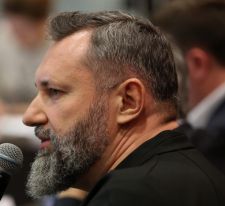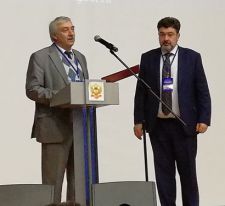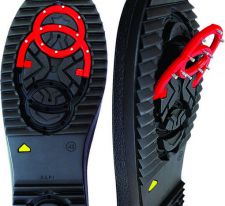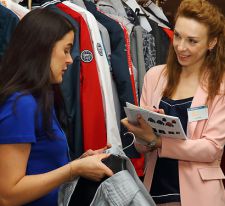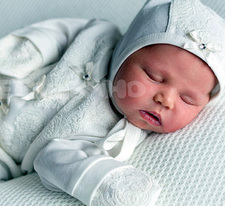Hackathon: New Horizons
The WearABLE Future hackathon was held in Moscow, organized by the Bezgraniz Couture™ project and SAP.
The participants of the hackathon were faced with the task of developing new FashionTech services using the methodology of design thinking and SAP Leonardo solutions. The first place was taken by a team of ITMO University students from St. Petersburg, who solved the problem of putting on shoes, which is relevant for many people with disabilities. The winners came up with a new solution under the working name TapOk - smart shoes with a sliding mechanism acting on the principle of a linear actuator. With the help of a drive located in the sole, the front part of the shoe is extended, and the shoes are easily put on without the help of hands. Heating elements and sensors are located in the insole, which makes it possible to maintain a comfortable temperature. You can control the device by voice or using a special smartphone application.

"SAP solutions allow you to transform not only business processes, but also familiar household items. The WearABLE Future hackathon showed how new technologies can change the lives of people for the better, whose physical capabilities are limited for some reason," said Natalia Parmenova, Executive Director of SAP CIS.
Yanina Urusova, co-founder of the Bezgraniz Couture™ project, highly appreciated the event: "The modern fashion industry has discovered technologies. Moreover, FashionTech is already a real fashion. All designers are thinking about how to get involved in this process. We are talking about the production of high-tech fabrics, and the creation of clothes that function as a device on the Internet of Things. All these topics were touched upon at the hackathon. As a result, we got some interesting prototypes.

In addition to smart shoes, were offered Gen.net – heated leggings, controlled using a mobile application on a smartphone. They are made of conductive fabrics and equipped with sensors that allow you to automatically heat clothes if a person cools down. There are two possible control options Gen.net : either the person regulates the temperature himself, or the application knows below what temperature cooling is dangerous, and turns on the heating. This development is important for people in wheelchairs, as they often do not notice that their feet are cooling because they do not feel them, and therefore the risk of hypothermia with the most unpleasant consequences is high. Thus, Gen.net helps to maintain health.
An equally interesting solution was the Find my sock digital wardrobe. An application for finding lost things, as well as matching clothes with NFC tags for visually impaired people. For people with problems or complete loss of vision, the Communicator application will be very useful. It uses labels that allow you to convert color into music.

In addition to technological creative teams, potential users of new inventions also took part in the hackathon: blind people, in particular Vsevolod Popov and Anatoly Popko; young women using wheelchairs, for example Jennet Bazarova and Anastasia Vinogradova; prosthetic wearers Evgenia Suzdaltseva and Vladimir Kiselyov. This gave the participants of the hackathon an opportunity to feel the target audience of their projects, see what kind of people they are and how they look, and directly find out their needs.
"It was very interesting to work," says Yanina Urusova. It's nice that such reputable international companies as SAP or Covestro have provided their solutions for creating new projects at the intersection of fashion and technology. A Covestro representative was in direct online communication with us from Leverkusen and talked about polymers and their properties in the context of the fashion industry. Hackathon participants learned how polymer can make fabric "smart". And SAP showed ready-made solutions for FashionTech. The hackathon participants were delighted with the work process and were inspired by the topic of new technologies. For example, designers from the British Higher School of Design said that before that they could never imagine in their lives that they would be dealing with some kind of sensors or the Internet of Things. And now they want to work further and develop in this direction."

On the last day of the hackathon, project pitches were held. The works were presented to the competent jury, which included: Natalia Poppel (Head of the Corporate Social Responsibility Department of Severstal), Vera Solomatina (SAP HR Director), Georgy Laptev (Head of the Laboratory of Innovative Business and Entrepreneurship at the Faculty of Economics of Moscow State University), Tobias Raisner (co-founder of Bezgraniz Couture™), Anatoly Popko (an expert in the field of non-visual accessibility), Anna Chernykh and Vladimir Tilinin (founders of CMIT «Design workshops » and curators of the course «Fashion Design » at BHSD).
There is another very important result of this event for us: inspired by the joint work, SAP decided to conclude a long-term cooperation agreement with Bezgraniz Couture™ to develop the topic of FashionTech at the global level.
In addition to the companies listed above, the partners of the WearABLE Future hackathon were Project + 1, Chevron Neftegaz Inc. and Innovations Studio of the Faculty of Economics of Moscow State University.
Author: Olga Steinberg,fashionconsulting.ru
Photo by the author



